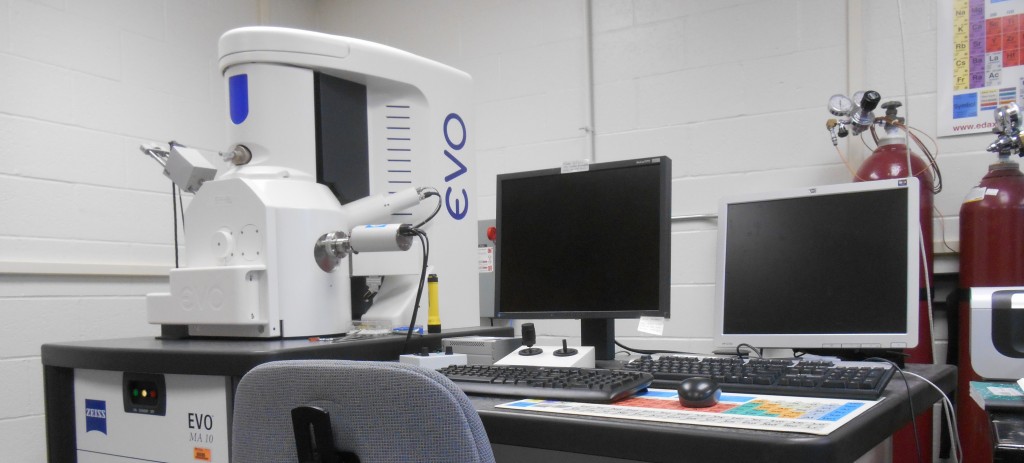Electron Microscope Prices: Factors to Consider in Buying
Electron microscopes are highly advanced instruments that are considered to be long-term investments. With the number of microscope models and designs that are available commercially, determining which has the best sample-specific imaging capacity while also performing optimally in the laboratory setting is by no means a simple task.
Apart from electron microscope prices, we’ll list the other necessary factors to consider before procuring one. These considerations include hardware and software, imaging performance, machine ambient condition requirements, after-sales support, and machine servicing. By being critical of these factors, you’re effectively ensuring the equipment you’re getting will provide trouble-free, optimal performance for many years after installation.
Factors Affecting Electron Microscope Prices
At present, many sales and marketing ploys offer incentives for buyers to purchase machines that, in hindsight, don’t meet the demands of microscope users or the overall design and concept of the facility. This situation leads to countless machine difficulties in more than a few cases. Often they’re caused by a general lack of user expertise and sub-optimal environmental conditions more than anything else. Both can cause a chain reaction, resulting in the machine being shut down for servicing rather than up and running for imaging.
Therefore, when purchasing a new electron microscope, it’s imperative to verify machine suitability for the designated facility deliberately. Going through this process effectively decreases the possibility of complications occurring.
The following are the primary factors that affect electron microscope prices:
1. Microscope Type
When purchasing an EM, the first thing you need to do when purchasing an EM is to determine the type of imaging you’ll need and carry out in the facility. To help decide this, consider the types of samples you’ll analyze and the information you need to obtain, such as the sample’s internal features or surface information.
Currently, three microscope options are available commercially: the Transmission Electron Microscope (TEM) and Scanning Transmission Electron Microscope (STEM) for imaging and analyzing features from thin, electron transparent samples, the Scanning Electron Microscope (SEM) for imaging and analyzing the sample surface of bulk samples, or the Dual Beam (SEM/Focused Ion Beam) system, which is equipped with multi-tool attributes, capable of creating cross-sections for viewing the sample’s internal features and surface imaging with the SEM.
Below is a list of comparisons involving the different electron microscope types that should help with your decision making during the buying process:
|
Microscope Type |
Imaging Mode | Source | Sample Type |
Techniques and Imaging |
| TEM | Electron
● Field Emission (cold field emitter) ● Thermionic (tungsten hairpin, lanthanum hexaboride) |
Transmission | Thin, electron transparent samples (ex. cryosections, lamellae, etc.) | Conventional Imaging: high-resolution TEM, electron diffraction, tomography, single-particle analysis, scanning transmission mode, and in situ imaging
Analytical: Energy dispersive x-ray microanalysis (EDX), electron energy loss spectroscopy (EELS), energy filtering, zero loss imaging |
| SEM | Electron
● Field Emission (cold field emitter) ● Thermionic (tungsten hairpin, lanthanum hexaboride) |
Surface | Bulk
● Dehydrated /dry ● cryo/ hydrated |
Conventional:
Backscattered electron (atomic number contrast) Secondary electron (surface information)
Analytical: Energy dispersive x-ray microanalysis (EDX), electron beam induced current (EBIC), electron backscattered diffraction (EBSD) |
| Dual Beam | Electron
● Field Emission (cold field emitter) ● Ion-Gallium, Neon, Helium, Xenon |
Surface | Bulk for cross-sections and surface imaging
Thin, electron transparent, such as lamellae produced |
Same as SEM plus:
Focused ion beam- site-specific patterning and milling, secondary ion imaging, bright and dark field scanning transmission mode |
Once you decide which machine type is the best fit based on sample analysis needs, you need to consider other factors that are also drivers in the electron microscope cost, namely:
2. Configuration
Electron microscopes are highly technical instruments that are often purchased for specific tasks. Therefore the number of configurations that can be chosen directly affects the price.
For instance, choosing a high contrast, high-resolution lens over a conventional lens can contribute to a significant cost difference. In the case of transmission electron microscopes, they may include a configuration option for a triple beam system. Also, specific electron microscopes even have a single or dual monitor configuration designed for productivity instead of image resolution. Finally, configurations that can dictate the detector’s location impact the corresponding equipment cost.
3. Components
Numerous components can influence the price difference among electron microscopes. However, the biggest portion of variation can be attributed to the following components:
Image display — Depending on the electron microscope, the system may come with various image displays. Typical configurations include a single image, large screen, dual image, and quad image displays.
Emitter – the emitter, which is the electron source of the microscopes, comes in three types: tungsten filament, which is the most common type of emitter and made out of high-quality tungsten, the solid-state crystal, and a field emission gun.
Stage controls — they allow the specimen to be rotated, elevated, lowered, and tilted. Depending on the specific type of stage controls, there may be up to 5 axes of control.
Detectors – Several detectors are utilized to detect scattered electrons that aid the electron microscope in producing images.
4. Customization
Depending on the manufacturer, a wide range of customizations and specific features can be incorporated into the electron microscope. The corresponding price tag can skyrocket instantly, depending on the number of customizations applied and their complexity. customizations include:
- Tensile and heating stages
- Custom design for a fully focused WDS spectrometer
- Static electrical backscatter diffraction (EBSD)
- Hot cells, otherwise known as radiation shielding
5. Resolution
High-resolution electron microscopes are capable of resolving images as small as 0.18 nanometers. Specific objective lenses and imaging systems are necessary to reach these levels of resolution, and they come at a hefty cost. High-end electron microscopes feature low kilovolt specifications that can achieve a high level of resolution on beam-sensitive specimens.
6. Sample Accommodation
Sample accommodation is another factor that influences the cost of electron microscopes. Depending on the type of sample being examined, special requirements on size, weight, ventilation, or barriers may be required to accommodate the specimen. The specific requirements for specimen accommodation can dictate the need to customize the electron microscope or select a different one entirely.
Other Considerations
Apart from the cost drivers we mentioned, the following are other aspects that can also affect your decision when buying an electron microscope:
1. Costs Involved with Equipment Ownership
Aside from the listed purchase price, there are recurring fees associated with owning an electron microscope. These fees include ongoing maintenance costs, operational costs, and associated consumables. Also, apart from these expenses, there are other costs involved with the ownership, such as training and initial system installation and configuration.
2. Resolution in Relation to Voltage
Samples are traditionally coated in a metallic layer to attain the requisite resolution at high voltages. However, modern electron microscopes compensate for this by generating low-accelerating voltages, eliminating the need to taint a specimen. Take note that this can be a significant cost driver as well.
3. Prerequisites for Primary Observation
Electron microscopes have varying levels of sample accommodation. Since this is the case, you must ensure that the electron microscope can accommodate the type of specimens to be observed.
Before you proceed, take the time to answer the following questions:
- What are the primary specimens you’ll examine using the electron microscope?
- What specific requirements can be required to examine them?
- What are the sizes of the specimens you’ll be examining?
One final factor to consider is the opportunity cost of ownership, which is the decision between buying and leasing and the potential to upgrade to the latest technology once it becomes available. Leases have a higher usage cost than outright purchases, but you don’t have to worry about reselling if you need to update to a newer system. This decision will be based primarily on your organization’s financial standing and the primary requirements of your system.
Key Takeaway
Purchasing a new electron microscope, prices notwithstanding, is a huge responsibility nowadays. Since this type of technology is continually changing, there’s a lot of emphasis on maximizing investment over a limited time frame.
Traditional ways of purchasing such a machine are no longer applicable, and the selection should be based on rigorous testing in a logical and scientific manner.
Choosing a specific electron microscope requires extensive research on your part, as well as the development of a standardized impartial screening method for narrowing down the list of your options.
Ultimately, your selection shouldn’t be based solely on imaging performance but also on the environmental condition requirements of the machine, associated hardware and software, and after-sales support and service to ensure that your equipment will function properly once installed.


2 thoughts on “Electron Microscope Prices: Factors to Consider in Buying”